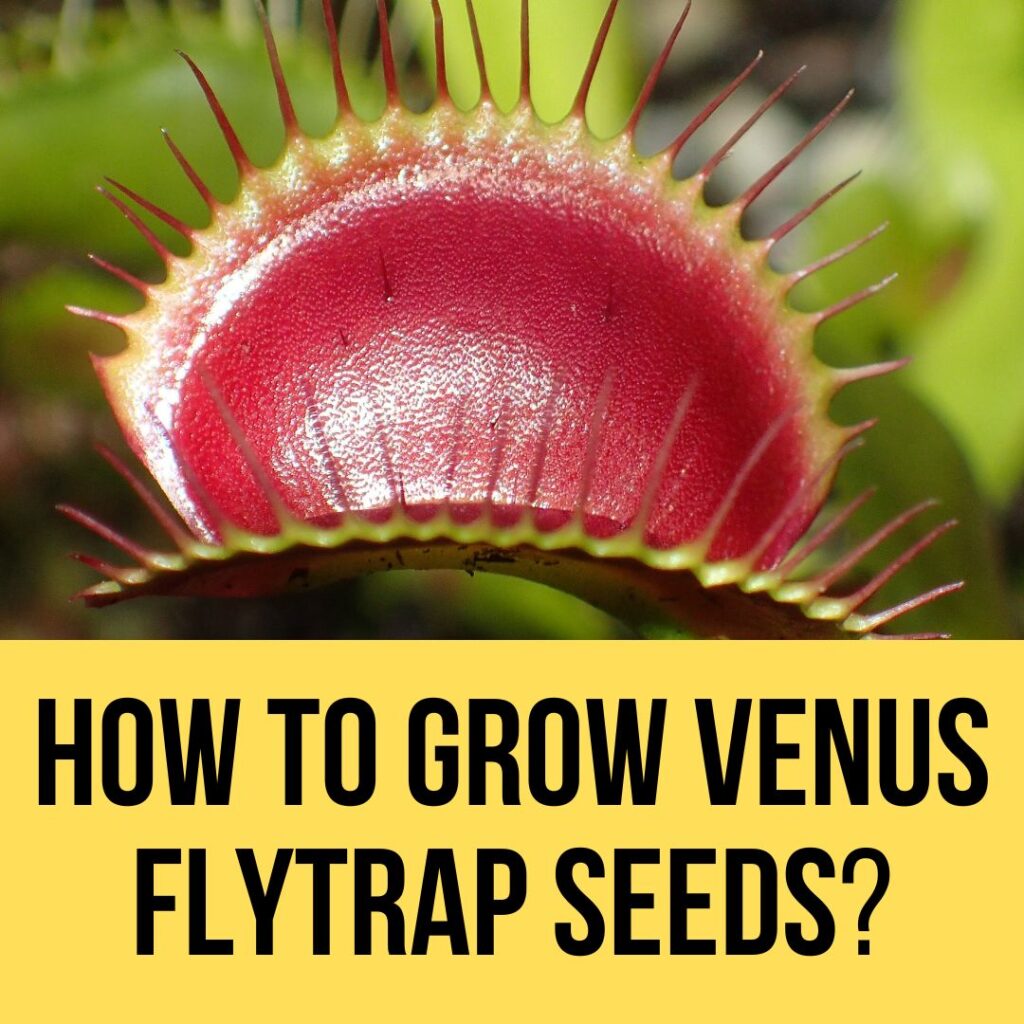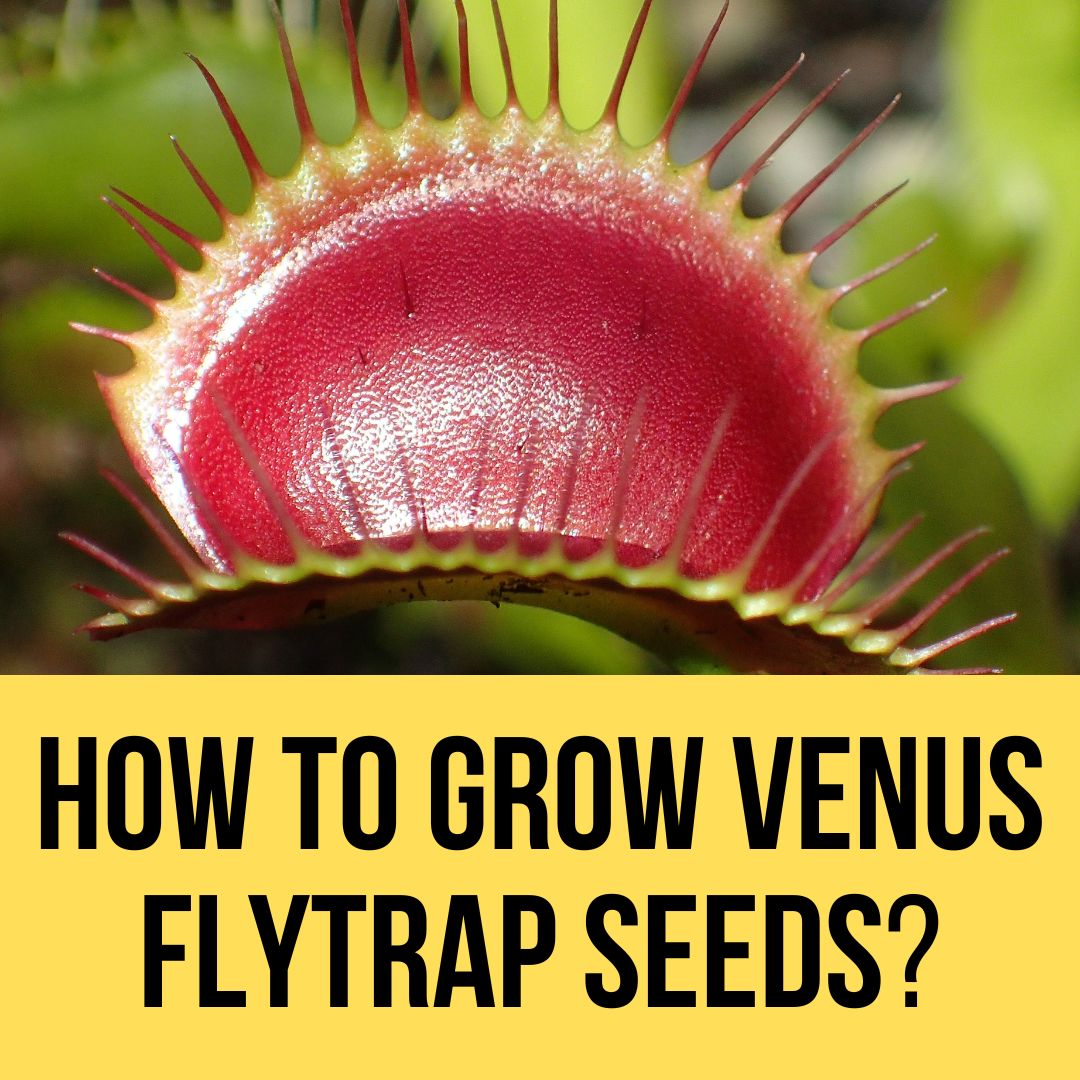Venus Flytrap is one of the interesting carnivorous plants to gardeners and plant lovers. Many famous people have been praising this fascinating plant for many years. That’s why people get motivated and often try to grow it in their garden, or home.
Before doing that when people try to gather info about it they face many myths, terrariums, and confusing facts. Though we have our own venus flytrap without the hustles. In other words, it’s easy to grow them. Our experiences and straight facts let us help you to grow venus flytrap from seeds on your own.
How To Grow Venus Flytrap From Seeds

If you’re interested in growing Venus flytraps, then you’ve come to the right place! In this article, we will walk you through every step of the process, from choosing the right flytrap variety to planting and caring for your plants. We’ll also discuss some of the best ways to grow Venus flytraps, and answer any questions that you might have. So if you’re looking to add a little green to your home landscaping, then look no further – we will tell you How To Grow Venus Flytrap From Seeds point by point.
Collecting Seeds
Now, it’s time for interesting things. You have to start with collecting authentic seeds. But it’s a tricky one. Because most venus fly trap seeds are fake or too old. Sometimes people find their plants weird looking, not in proper shapes. This happens for fake seeds or old seeds.
Do not buy seeds that are imported or manufactured from China, do not buy “Blue Venus flytrap” seeds. These ones are probably fake, there isn’t anything such as blue venus flytraps. Look out for authentic sources.
You can try Flytrapstore, Sarracenia Northwest California, and other authentic nurseries around you. International Carnivorous Plant Society might be a good source for seed collecting. Original, authentic seeds are black, small, and teardrop shaped. If your seeds look different from this then it’s probably fake.
Planting Seeds
Before planting the seeds moist the growing medium with reverse osmosis water, and distilled water. Do not use tap water. Place the growing mixture in the container. Do not bury the seeds. Instead, scatter them on top of the growing medium. You may use a little bit of sphagnum moss peats over the seeds for better results.
You don’t need to stratify the seeds before planting them. The seeds will come to you with pepper packaging, just unpack and plant them. Just don’t order them too soon. From my experience, the following steps will ensure you a 95-99% successful germination rate.
But if you want to store them you can go through the stratification process. Put your seeds on a damp paper towel, first. Then put them in a small plastic bag, mix them with peat moss, and spray them with pure water. Store them in the fridge at a cold temperature. You can store them for 3-4 weeks.
But it’s not necessary. If you don’t want to store your seeds you don’t have to follow this stratification process.
Caution
Do not place the growing container in direct sunlight first. The seeds or newborn plant may feel overheated which can damage or even kill the seeds. After germinating, give the seeds direct sunlight gradually. So that they can slowly adjust. Start with 4-5 hours a day. In 20-35 days your plant should be germinated. Remember when they start growing they will need lots of direct sunlight to grow.
Do not let the soil dry out or be overly wet. Both are harmful. If your newly grown plant looks like a half-inch long grass or stems with no leaves, they are probably faked. This means you have been scammed with fake seeds.

Caring guideline
1. Placement:
The growth of any plant greatly depends on where you put it. For most carnivorous plants remember the word “direct sunlight”. When you are placing the plant indoors, select a bright sunny windowsill. If you can manage some lights for backup it will be better. For selecting an outdoor place, like in your garden, select the spot which has the most direct sunlight. Bright spots are important for venus flytraps because insufficient sunlight causes weak and floppy leaves.
2. Environment:
Venus flytraps like higher humidity. Even after ensuring the right placement, the plant may not get proper growth for not having high humidity. Moisture is recommended for the planting medium. There are some easier steps to increase humidity like placing “saran wrap” style plastic wrap over the seedling tray or pots. You can also use especially available seed starting kits which come with plastic facilities. Another important thing is, that venus flytraps don’t require a terrarium to grow.
3. Water Management:
Pure water is important for carnivorous plants. They evolve in damp environments. The soil should be moist but not waterlogged, it’s heinous for roots. the soil should be barely damp or wet, not waterlogged. Don’t mix things up. In the growing season, the plant needs lots of water and in the winter season, it needs minimum water. Do not use tap water. Venus flytrap can’t tolerate mineral water. Tap water contains minerals. So you have to be picky about pure water. Only use rainwater or distilled water. Another thing, in the growing season you should stand your pots in about 1 cm of water (about ⅓ inch).
4. Soil:
The soil and growing medium can be prepared with peat moss mixed with silica sand . And the ratio should be 1:1.
5. Growing Container:
The growing container should provide seeds in moist and warm conditions. The container should also allow air circulation. Use a Tupperware-type container. Poke holes for proper airflow. Makes holes at the bottom for proper drainage and at the top for airflow. You can also put moss at the bottom. Sometimes it keeps the soil moist and provides good drainage.
6. Temperature:
After ensuring all these steps you should look out for temperature requirements. A grown Venus flytrap can tolerate a wide range of temperatures throughout the growing season. And it’s about 26.7-29.5° C.
Can a venus flytrap survive without bugs?
Flytrap plants are carnivorous. They can devour insects and bugs on their own to fill nutrition requirements. Although they can survive without eating insects for 1-2 months. If your plant has been placed outside or you are growing them outdoors in your garden, etc it can naturally manage its own foods like little bugs, and insects. But if you are growing them indoors you have to feed them bugs twice or thrice a month. You can also feed them dead bugs, and flies. Another thing spiders, crickets, and slugs are their favorite. Do not feed them ants, they don’t have much nutritional value.
How long do venus flytraps live?
Venus flytrap gets lots of nutrients from photosynthesis, devouring insects that are not provided by soil. Since they are carnivorous plants they have different sources of nutrition. From various sources, they can manage their nutrition requirements pretty well. Also, they don’t have many risks of pests. That’s why they can live for 20 years easily.
Conclusion
When you grow venus flytraps you have to be patient. It takes several years for these plants to mature. Despite all this long wait it is satisfying to see a grown plant for its beautifulness. Besides, since it’s a carnivorous plant it has many interesting habits and facts.
Be patient with this whole process to enjoy the beauty of nature.
